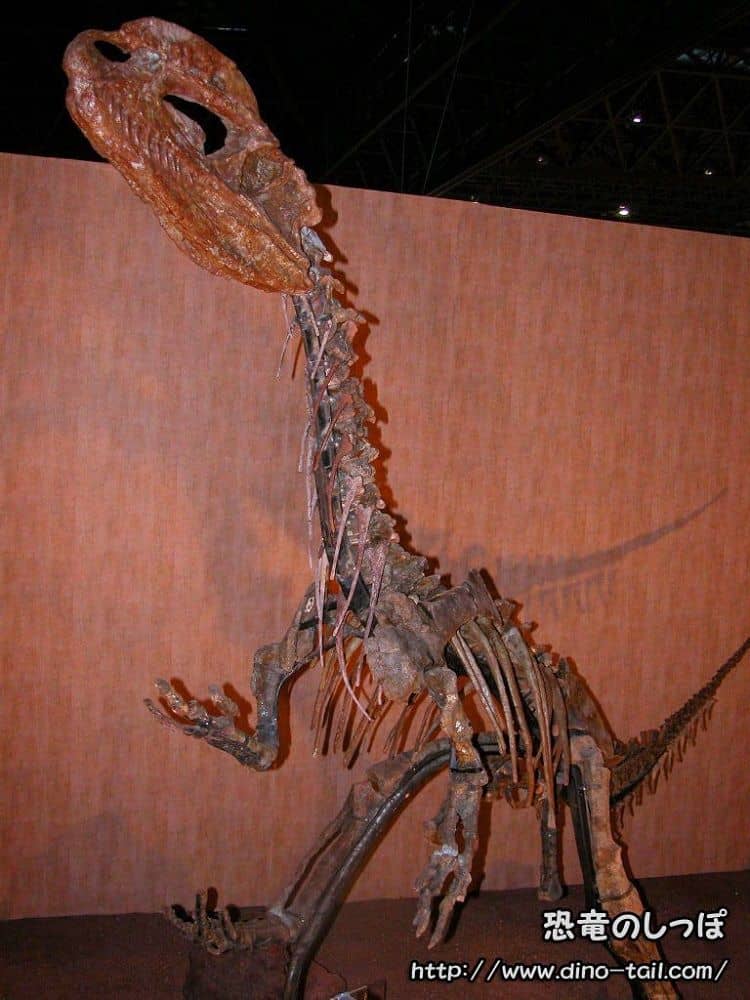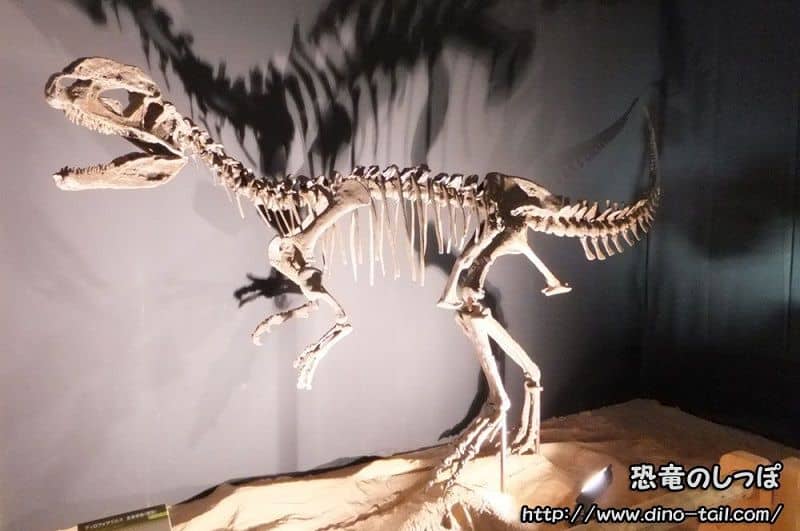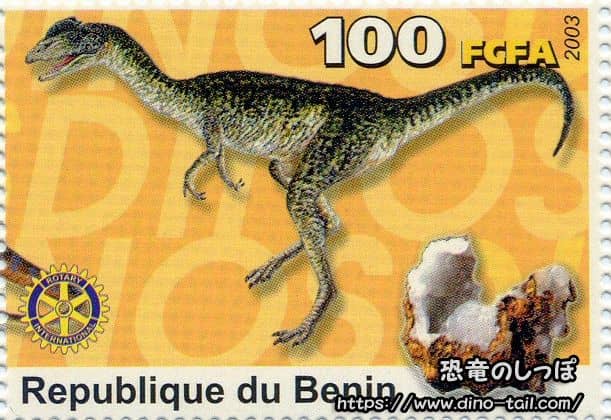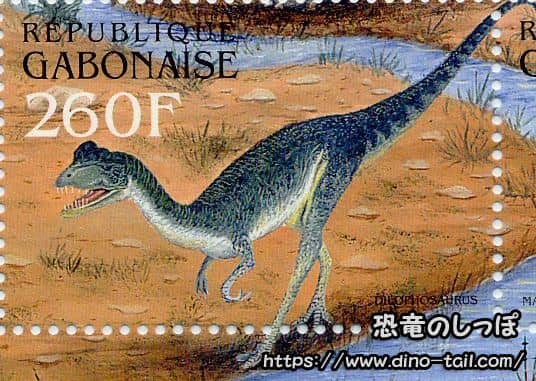About Dilophosaurus
| Scientific Name (Genus) | Dilophosaurus |
| Meaning of Name |
Two-crested lizard
di (two) [Greek] - lophos (crest) [Greek] - saurus (lizard) [Greek] |
| Classification | Saurischia, Theropoda |
| Total Length | Approx. 6m |
| Diet | Carnivorous |
| Period | Early Jurassic |
| Species | Dilophosaurus wetherilli |
| Year of Paper Publication | 1970 |
| Genus Name Publication | Welles, Samuel P. (1970). Dilophosaurus (Reptilia: Saurischia), a new name for a dinosaur. Journal of Paleontology, 44. |
Characteristics
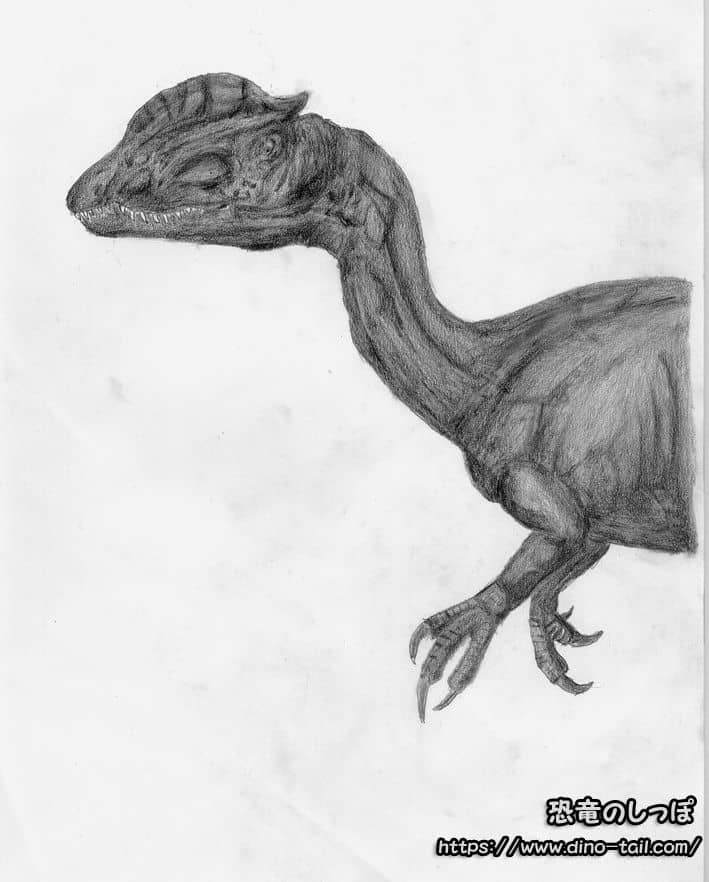
Dilophosaurus was a carnivorous dinosaur that lived in America and China during the Early Jurassic. It was one of the first genera of Early Jurassic theropods to show a trend towards larger size, estimated at about 6m long and weighing 400kg.
It is characterized by the two crests on its head. The crests of Dilophosaurus found in China are said to be lower than those from America.
The Crests on its Head
When first discovered, the flat, bony structures on its head were thought to be the result of the skull being crushed during the fossilization process.
Later, the discovery of a well-preserved skull revealed that they were not crushed, but were in fact the characteristic crests of Dilophosaurus.
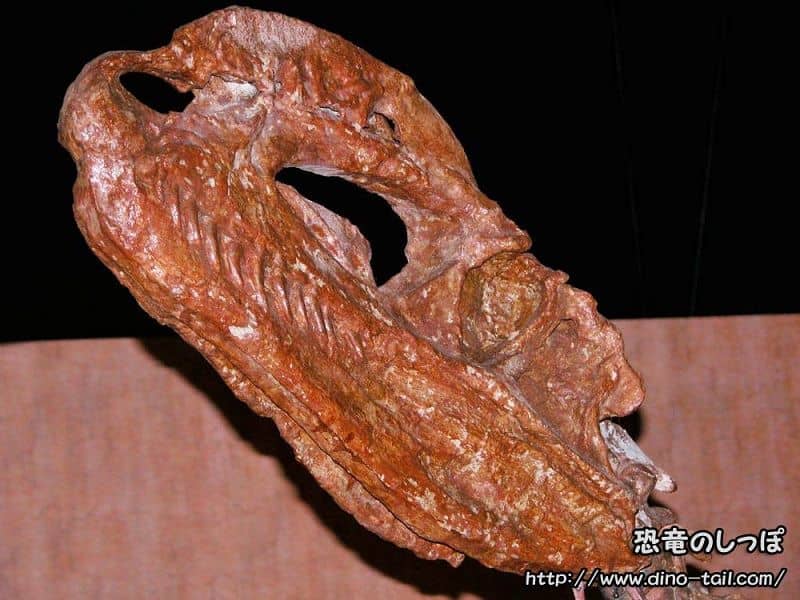
It is also known that the inside of the characteristic crest bones contained air sacs (pneumatic cavities), similar to birds, making them surprisingly lightweight yet strong.
An Unexpected Link to Birds?
The presence of hollow spaces within the crests suggests that, in addition to display, they may have been used for resonating sounds, much like the air sacs of birds, to produce loud calls. This is an area of ongoing research.
Latest Research Reveals a "Formidable Hunter"
For a long time, Dilophosaurus was thought to be a scavenger-like dinosaur with a delicate jaw and a weak bite. However, a comprehensive re-examination of five specimens, published in 2020, has drastically changed this image.
The study revealed that the jawbones of Dilophosaurus were extremely robust and anchored powerful muscles. This has increased the likelihood that it was one of the apex predators of the Early Jurassic, capable of capturing and killing large prey.
A Strange, Crocodile-like Notch in the Jaw
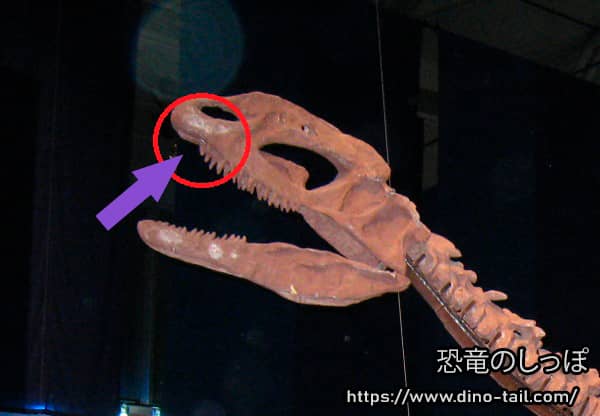
A closer look at the skull of Dilophosaurus reveals a strange notch (subnarial gap) in the upper jaw's tooth row, just below the nose. This gap, which separates the front and back teeth, was one of the reasons its jaw was once thought to be weak.
However, this feature is also seen in animals that primarily ate fish, such as Spinosaurus and crocodiles. Therefore, it is thought that Dilophosaurus may have hunted not only land animals but also fish in rivers and lakes. It might have used its powerful forelimb claws to pin down prey, and its notched jaw to securely grip slippery fish.
The Classification of Dilophosaurus
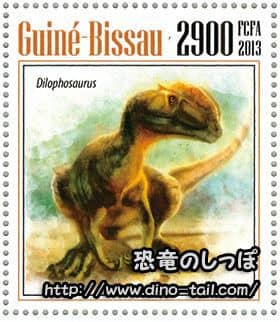
There are various theories regarding the phylogenetic classification of Dilophosaurus.
Some place it in the Coelophysoidea or Carnosauria, while others place it in the Tetanurae. A definitive conclusion will require further research.
Discovery and Publication
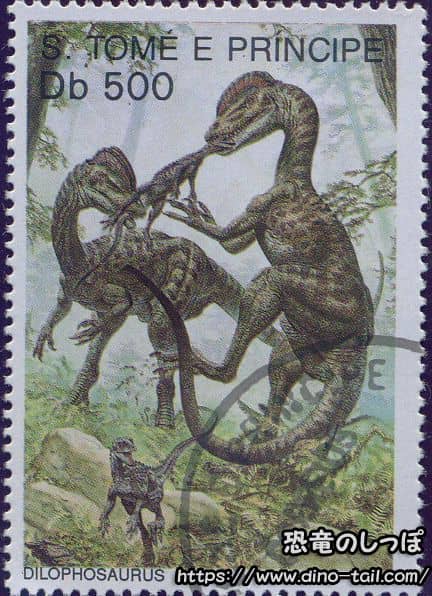
In 1942, a team from the University of California Museum of Paleontology discovered three dinosaur fossils during a vertebrate fossil excavation in northern Arizona. One was too eroded to be collected, but two specimens (UCMP 37302 and UCMP 37303) were brought back and prepared over two years.
In 1954, Samuel P. Welles, a member of the excavation team, identified them as a species of the known genus Megalosaurus (Megalosaurus wetherilli). The crests were thought to be displaced fragments of the left side of the skull, and the limb proportions were similar to those of Megalosaurus.
However, after a well-preserved specimen was discovered in 1964, it became clear that the bony crests were in their natural position. The specimens (UCMP 37302, UCMP 37303, and the newly found UCMP 77270) were re-examined. A new comparison between Megalosaurus and the specimens led to the conclusion that a new genus name was needed.
In 1970, Samuel P. Welles described Dilophosaurus, meaning "two-crested lizard."
The Frill Depicted in "Jurassic Park"
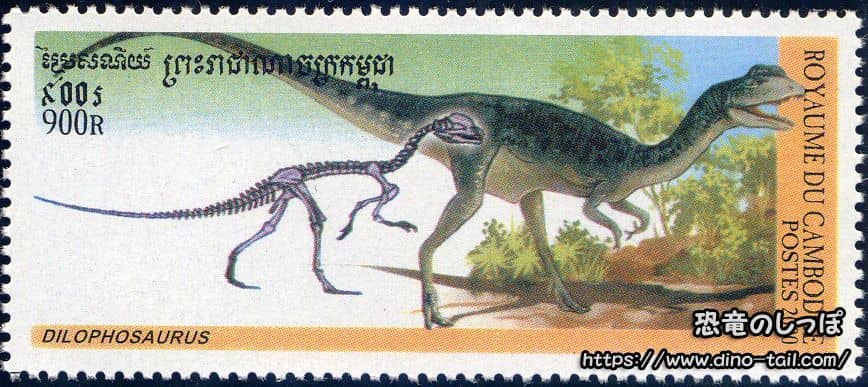
In the 1993 movie "Jurassic Park," Dilophosaurus appeared under the name "Spitter."
In the film, it is depicted as a venom-spitting dinosaur, but there is no evidence that it actually possessed venom. It was also shown with a frill for intimidation, but it likely did not have one. The venom and frill are best considered fictional embellishments for the movie.
Dilophosaurus Stamp & Fossil Gallery
